Did you spend 2020 listening to podcasts and thinking, “heck, I could do this!” Well, you’re not alone. Almost a million podcasts started last year, more than triple the number from 2019. Apparently everyone thinks they’re as interesting as Joe Rogan…we’ll see about that.
It may seem like you could just plug in any old microphone, start yammering, and POW: you’re a podcaster — but that’s far from the truth. Getting good, professional sound is the foundation of a good podcast, and that doesn’t just happen by chance — you need good gear.
Buying good gear, however, doesn’t have to mean shelling out millions of dollars. In fact, there are many cheap setups you can use that will create the illusion of that professional studio sound. The trick is getting the right tools within your budget and knowing how to use them.
Microphones, interfaces, headphones, sound proofing, and the DAW (digital audio workstation aka recording software) all need to be taken into account. Let’s have a look at all the different components, and figure out a setup that isn’t heavy on your wallet but will deliver huge sound.
We love giving recommendations that help improve your life! In doing so, we participate in affiliate programs and receive a share of the revenue from your purchase.
Microphones
Microphones are the most important part of any podcast, and they are definitely where you want to start when building a home studio. Some microphones feature a built-in preamp and are plug-and-play ready with a USB cable; while others require phantom power and a separate interface in order to connect to your computer. Each type have their pros and cons, but an all-in-one USB microphone will get you going with the least amount of gear.
Another thing to consider is which polar pattern and dynamics you need in your microphone. Do you have a soundproof studio or an empty room with hardwood floors? Will you be recording in a noisy environment? Are you going to interview people, or is it going to be just you? What are the dynamics of your voice?
Microphones come in all flavors, and it’s important to know what you’re looking for.
Best Sounding
Rode PodMic

| Connector Type | XLR (not included) |
| Acoustic Principle | Dynamic |
| Polar Pattern | Cardioid |
| Frequency Range | 20Hz to 20kHz |
| Interface | Required |
The name Røde has been synonymous with high-quality audio production for the last half-century. This particular mic ensures their legacy lives on because you won’t find a better podcasting mic in this price range. Pairing this bad boy with a good interface will pretty much guarantee an idiot-proof way to produce a great sounding podcast.
Best All-Around
Shure MV7

| Connector Type | USB (included) or XLR (not included) |
| Acoustic Principle | Dynamic |
| Polar Pattern | Cardioid |
| Frequency Range | 20Hz to 20kHz |
| Interface | Required with XLR Not Possible with USB |
If you’ve been to a concert or recording studio, you’ve seen and heard Shure mics. They’re probably the most famous and most used audio brand in the world. The MV7 is the next generation incarnation of the beloved SM7B, combining amazing digital and analog capabilities in one tight package. You can run this as a standalone mic right into the computer with its USB cable, or use an XLR and run this bad boy through an interface for maximum quality. The MV7 might be expensive, but it’s definitely the complete package.
Most Affordable
Blue Snowball

| Connector Type | USB (included) |
| Acoustic Principle | Condenser |
| Polar Pattern | Cardioid & Omni-Directional |
| Frequency Range | 40Hz to 20kHz |
| Interface | Not Possible |
Blue may be a newcomer to the audio game (founded in 1995), but they certainly didn’t waste any time making a name for themselves. As one of the first companies to create high-quality USB microphones, they were pioneers of consumer-grade digital audio production. When I started podcasting, I used one of these. They sound fantastic and are uber affordable, plus they come with everything you need. No stand or interface is required. This thing is the definition of plug-and-play.
Interfaces
An interface does all the audio conversion work. Basically, it takes the analog sound signal from the mics, runs it through some good sounding amplifying processors and then converts it to a digital signal. Some microphones come with built-in digital audio processing, but nothing compares to the sound quality of a standalone unit.
Almost all interfaces will be able to supply 12v (or 24v) of power to any microphones that require it. An interface also allows for latency-free monitoring, something you will need if you are planning to use headphones in your studio (you should).
So will you need an interface? If you plan on using multiple microphones for interviewing guests, you will want to use an interface with traditional mics. It will keep all the signals in sync and allow you to have separate audio tracks for each person. That’s because using multiple USB mics on the same computer can result in audio drift and issues with incompatibility. Plus, the preamps in USB mics will never compete with a warm-sounding interface.
Best Sounding
Focusrite Scarlett 2i2

| Input Types | (2) XLR & 1/4″ |
| Sample Rates | 44.1kHz – 192kHz |
| Direct Monitoring | Yes |
| Included Software | Ableton Live Lite & Pro Tools First |
| Operating System | MacOS & Windows |
| Connection | USB 2.0 |
Here’s another legendary brand that shouldn’t need too much of an introduction. Focusrite was founded by Rupert Neve, who is credited as the creator of the modern mixing board. This bad boy has the best sample rates and therefore has the clearest audio, it’s as simple as that. It has toasty warm preamps that will make almost any mic sound beautiful, and super easy-to-use direct monitoring. A perfect specimen, honestly.
Best All-Around
PreSonus AudioBox USB

| Input Types | (2) XLR & 1/4″ |
| Sample Rates | 44.1kHz – 96kHz |
| Direct Monitoring | Yes |
| Included Software | Ableton Live Lite & Studio One Artist |
| Operating System | MacOS & Windows |
| Connection | USB 2.0 |
This workhorse unit from PreSonus is familiar to anyone who played in a band in the last 15 years. You’re not going to find a better interface at this price with this many features. It’s just not going to happen.
Most Affordable
M-Audio M-Track Duo
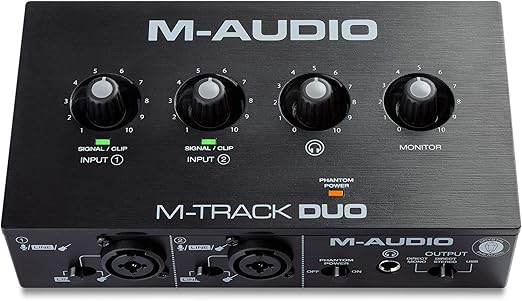
| Input Types | (2) XLR & 1/4″ |
| Sample Rates | 44.1kHz – 48kHz |
| Direct Monitoring | Yes |
| Included Software | Pro Tools First |
| Operating System | MacOS, iOS & Windows |
| Connection | USB 2.0 |
If you’re just looking for something to do the job, this M-Box has you covered. No frills, but very decent preamps considering the $70 price tag. If you pick up something like the Shure MV7, this will be all you need to get crystal clear audio.
Studio Accessories
There are some things you will need to consider other than hardware, like headphones, pop filters, and ambient sound proofing. While these things are not required for podcast production, using them will greatly improve your sound quality.
Headphones
Sony MDR7506

Let’s face it, buddy, you’re going to need some headphones. Otherwise, you won’t be able to monitor your recording to listen for irregularities in the signal. You don’t have the budget for a producer yet, i’m sure of it. Be your own producer and use these Sony headphones. They fit comfortably around your ear, giving you full coverage. They’re the best in the biz.
Pop Filter
Neewer Professional Pop Shield
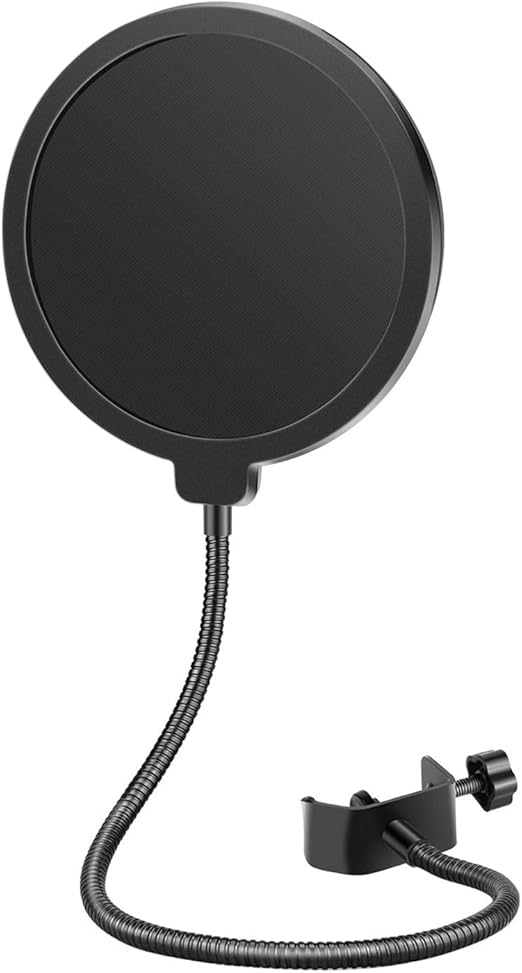
The purpose of a pop filter is to remove the loud pops you hear when you make loud “p” or “b” sounds into a microphone. They’re called “plosives”, and they ruin your recording. Plus you’ll look hella cool, like you’re Tom Segura or something.
Sound Proofing
YWSHUF Accoustic Panel 12-Pack
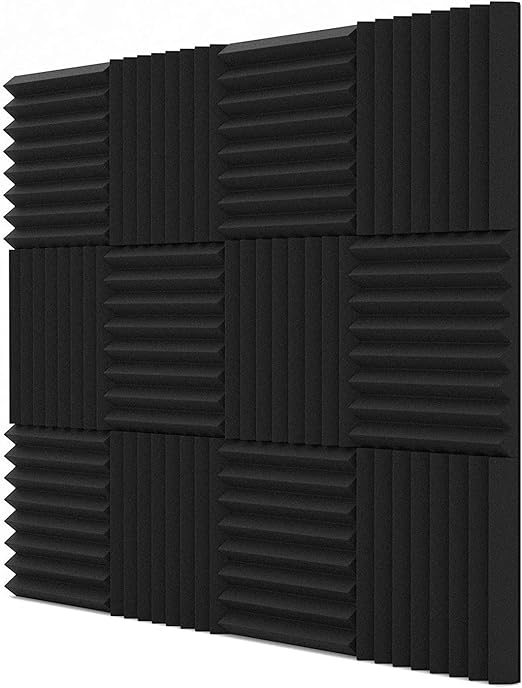
This stuff is only necessary if you’re in a room with hardwood floors and not enough furniture. If your room has some noticeable accoustics, grab some of these. I personally have a bunch around my studio room only because I want to pretend I’m Rick Ruben.
Mic Stand
InnoGear Microphone Arm
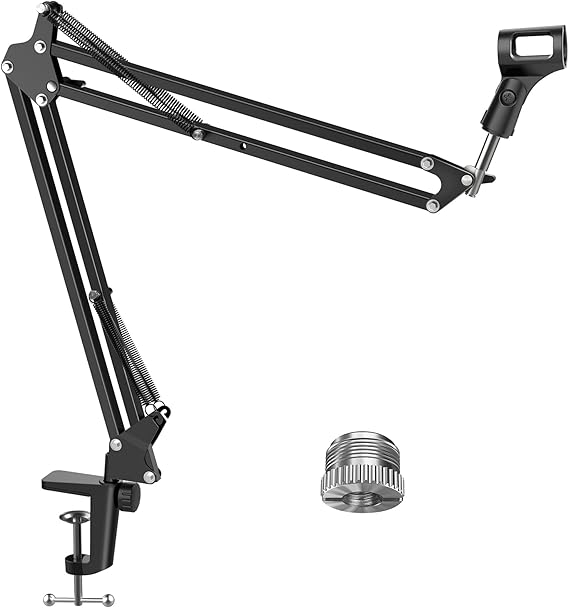
You’re going to need a mic stand. These are great because they clip onto your desk and can swivel any way you desire. These make it easy to move your whole setup out of the way when you’re done recording.
Software (aka DAWs)
There are many options for software to record your podcast. Some form of software is included in most USB microphones and interfaces, but their functionality is usually very basic. That being said, you don’t need powerful recording software if your hardware is already producing high-quality audio.
Eventually, once you understand the ins-and-outs of operating a basic DAW, you may be interested in getting into a more professional DAW for more detailed editing and sound processing. Or, maybe you want free open-source software that is reliable. Here are some options:
Most Powerful
Adobe Audition
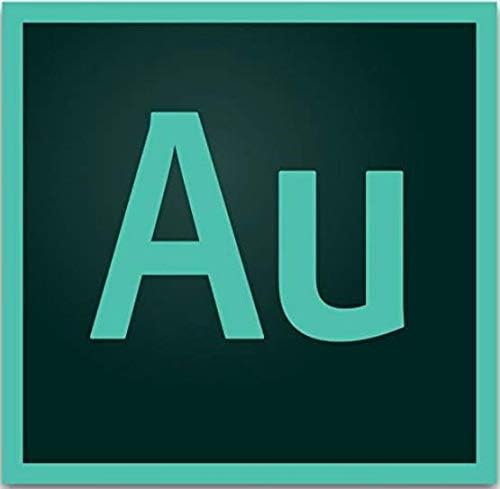
Adobe Audition is the industry standard, there’s no question about that. It does require some sort of tutorial, so I recommend doing some research before you buy. Once you understand how GarageBand and Audacity work and you’re ready to upgrade — this is your DAW. There are so many features in Adobe Audition that I bet you will unlock hidden potential in your podcast by using it.
Best Free DAW
Audacity

Everybody’s first audio editor. Try it out, it’s free! It doesn’t do a lot of things, but what it does it does well. Simple and easy to use, it’s definitely a good place to start if the other DAWs look intimidating!
I could go on and on about audio production, but honestly no one wants to hear it. I think I covered most of the basic stuff you need to get your podcast idea off the ground and into people’s eardrums. If you found this guide helpful, make sure to like and subscribe to our social media channels at the bottom of the page!


